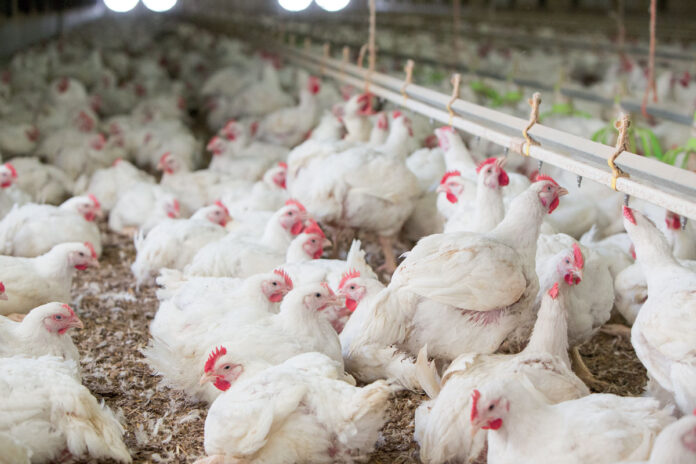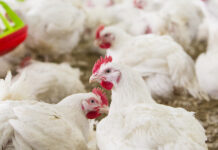
In the race to replace antibiotics on Canadian poultry farms, some producers have successfully adopted yeast-based prebiotic supplements. But there’s more potential to enhance the bioactivity of yeast-based products once researchers develop a better understanding of poultry gut health and the minute components that are active in yeast.
Recent work from Professor Bogdan Slominski, leader of the novel feed technology research program at the University of Manitoba, has led to promising results using new bioactive combinations, and new recommendations for how researchers should study poultry digestion in the future.
Enzyme combinations are key
“Yeast products are rich in protein and other nutrients, and they provide bioactive components that are known for their intestinal health benefits,” says Slominski. “Feed supplements in general are pretty expensive, so we want to make sure we are enhancing bioactivity to make them more powerful, and bring more value to producers.”
Slominski’s team is working to understand to what extent feed additives change the proliferation of different good and bad bacteria in a chicken’s gastrointestinal tract. He believes that combining yeast products and their fractions with specific enzymes will allow them to develop an even better product.
Getting to the fractions
To find the right combination of enzymes, Slominski needs to break down the yeast cell wall to access its specific components – a task that was impossible until recently, when his team landed on a process in previous research. Now, they are building on their work to access those fragments at the fractional level and release specific combinations that may be used to enhance yeast-based products.
“The cell wall is complex, and we are still testing its individual components to find fractions of polysaccharides that will block the binding sites for pathogens and prevent toxic effects in the gut,” Slominski says.
In the first part of the most recent study, Slominski’s team used a yeast-based growth promoter alone, and in combination with other enzymes to measure how they modulate gut physiology of young turkeys to have an anti-inflammatory effect and generally improve essential functions and fight disease.
“We haven’t found the ideal combinations – we aren’t there yet,” Slominski says. “Once we find the best combination, we will produce larger amounts of the enzyme-modified yeast cell wall products and test them in Salmonella challenge studies using broilers and laying hens.”
New recommendation for poultry researchers
To assess the success of each feed combination, Slominski’s team collected digesta samples from the small intestine and the ceca – a small pouch that joins the small and large intestine – to assess microbiome structure and short chain fatty acid production. In viewing samples from both locations, they gained a better understanding of the turkeys’ digestive processes, and developed a case for changing research practice for future work in the field.
Slominski says researchers commonly look to the ceca for information about microbiota, but the digestive process mostly happens in the small intestine. By looking at both, he found the small intestine to provide more relevant information on microbiota proliferation and any beneficial effects related to gut health.
“Gut health refers to the ability of the gastrointestinal tract to perform its function of digestion and absorption efficiently,” says Slominski. “Prebiotic components have a profound effect on the proliferation and function of the growth of beneficial bacteria to control pathogens and to ensure food safety.”
The qualitative structure of the material Slominski found in the gastrointestinal tract of young turkeys showed that the small intestine is a better showcase of the physiological processes related to feed additives, than the ceca. He notes a young turkey’s digestive system closely resembles a chicken’s digestive system. “Going forward, researchers should focus on studying the small intestine more so than the ceca,” he says.
This research is funded by the Canadian Poultry Research Council as part of the Poultry Science Cluster which is supported by Agriculture and Agri-Food Canada as part of the Canadian Agricultural Partnership, a federal-provincial-territorial initiative. Additional funding was received from CBS Bio-Platforms and Manitoba Egg Farmers.
















